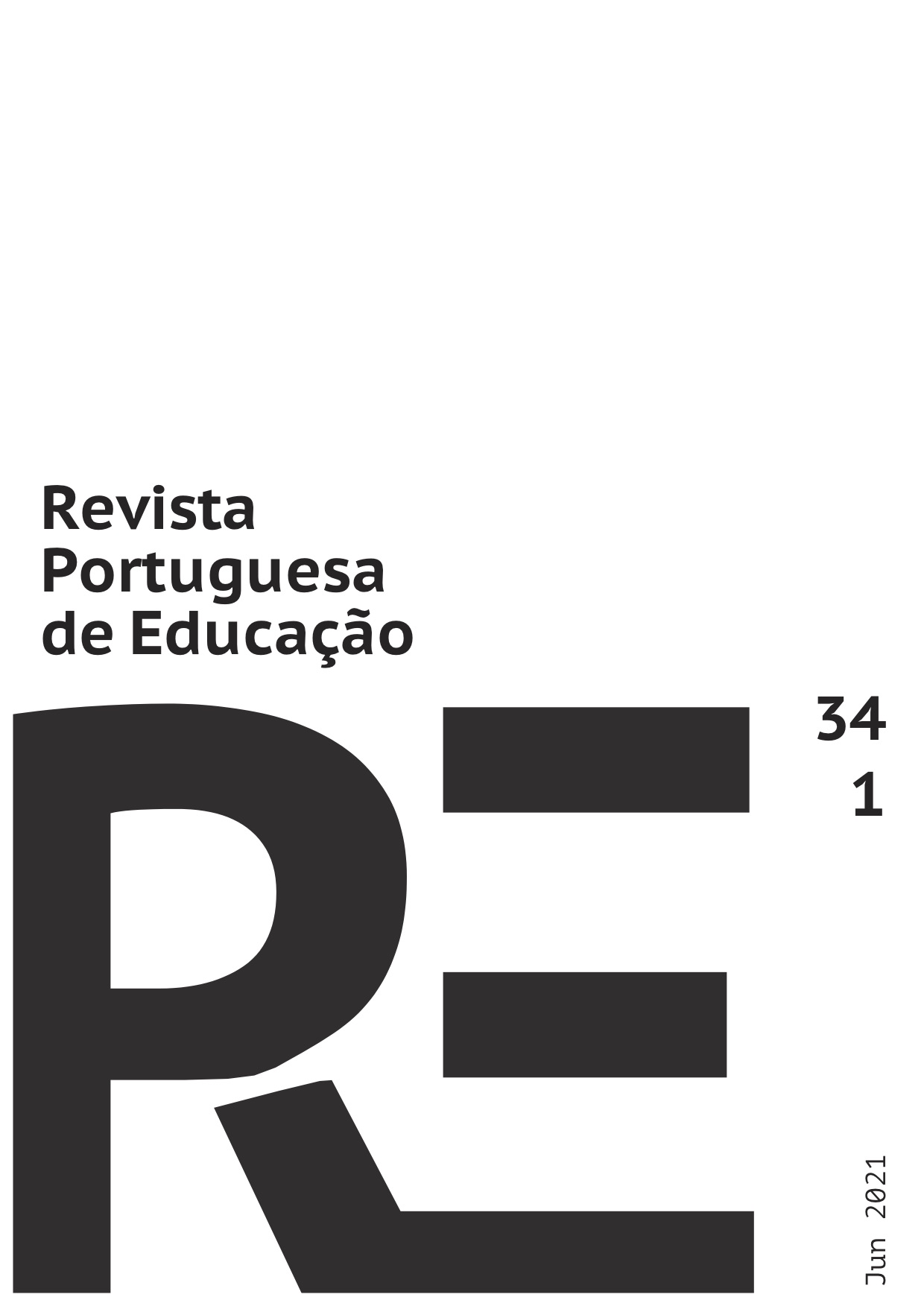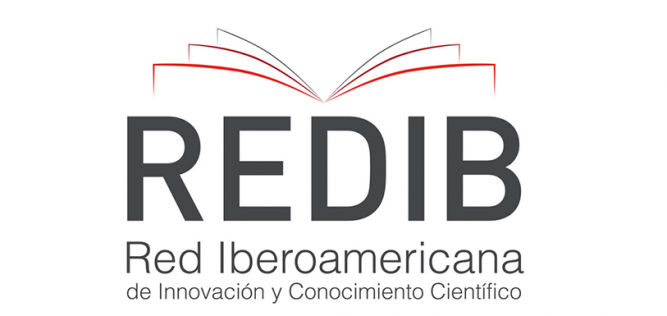A escolha de uma carreira no ensino em Portugal: Motivos e autoeficácia de estudantes de mestrado
DOI:
https://doi.org/10.21814/rpe.18401Palavras-chave:
ensino, motivos intrínsecos, motivos extrínsecos, carreira docenteResumo
Neste estudo analisaram-se os motivos de estudantes para escolherem a carreira docente e respetivas associações com variáveis sociodemográficas, com características do curso de formação de professores e com crenças de autoeficácia. Participaram 183 estudantes (86% mulheres) de cursos de mestrado em ensino de instituições portuguesas, que preencheram um questionário on-line sobre características sociodemográficas, motivos da sua decisão de se tornarem professores (Kiel, Geider, & Junger, 2004) e crenças de autoeficácia (Schwarzer & Jerusalem, 1995; versão portuguesa de Araújo & Moura, 2011). Através da análise fatorial, foram derivados quatro fatores subjacentes aos motivos para ser professor: (a) Benefícios da profissão, (b) Influências sociais, (c) Interesse no curso ou nos conteúdos académicos, e (d) Promoção do desenvolvimento das crianças/adolescentes. Foram encontrados valores médios mais elevados nos motivos relacionados com a Promoção do desenvolvimento das crianças/adolescentes e com o Interesse no curso/nos conteúdos académicos. Foram encontradas diferenças estatisticamente significativas entre os motivos de estudantes que optaram por um curso que profissionaliza para a educação pré-escolar e/ou primeiro ciclo e os que optaram por um curso que profissionaliza para o ensino de disciplinas específicas, assim como em função da idade, do género e da autoeficácia. As implicações para a formação de professores são discutidas.
Downloads
Referências
Araújo, M. & Moura, O. (2011). Estrutura factorial da General Self-Efficacy Scale (Escala de Auto-Eficácia Geral) numa amostra de professores portugueses. Laboratório de Psicologia, 9(1), 95-105.
Arbuckle, J. L. (1996). Full information estimation in the presence of incomplete data. In G. A. Marcoulides & R. E. Schumacker (Eds.), Advanced structural equation modeling (pp. 243-277). Lawrence Erlbaum Associates.
Azman, N. (2013). Choosing teaching as a career: Perspectives of male and female malaysian student teachers in training. European Journal of Teacher Education, 36(1), 113-130. https://doi.org/10.1080/02619768.2012.678483.
Bandura, A. (1993). Perceived self-efficacy in cognitive development and functioning. Educational Psychologist, 28, 117-148.
Bastick, T. (2000). Why teacher trainees choose the teaching profession: Comparing trainees in metropolitan and developing countries. Journal of Personality and Social Psychology, 80(5), 706-722. https://doi.org/10.1023/A:1004090415953.
Betz, N. E. & Hackett, G. (1981). The relationship of career-related self-efficacy expectations to perceived career options in college women and men. Journal of Counseling Psychology, 28(5), 399-410. https://doi.org/10.1037/0022-0167.28.5.399
Bilim, I. (2014). Pre-service elementary teachers’ motivations to become a teacher and its relationship with teaching self-efficacy. Procedia – Social and Behavioral Sciences, 152, 653-661.
Brown, T. A. (2006). Confirmatory factor analysis for applied research. New York, NY, US: The Guilford Press.
Bruinsma, M., & Jansen, E. P. W. A. (2010). Is the motivation to become a teacher related to pre-service teachers’ intentions to remain in the profession?. European Journal of Teacher Education, 33(2), 185-200. https://doi.org/10.1080/02619760903512927.
Direção-Geral do Ensino Superior (2018). Ingresso no ensino superior público, 2018-2019. República Portuguesa, Ciência Tecnologia e Ensino Superior. https://www.dges.gov.pt/coloc/2018/nota_cna18_1f_1.pdf.
Flores, M. A. (2012). A opção por um curso de ensino em tempos desafiadores: Motivações e expectativas de alunos futuros professores. In M. A. Cavalcante, A. F. de Freitas, L. C. V. Pizzi, N. L. F. Fumes, A. Lopes & M. L. Q. Freitas (Eds.), Formação docente em contextos de mudanças (pp. 23-40). UFAL.
Flores, M. A., & Niklasson, L. (2014). Why do student teachers enrol for a teaching degree? A study of teacher recruitment in Portugal and Sweden. Journal of Education for Teaching, 40(4), 328-343. https://doi.org/10.1080/02607476.2014.929883.
Fokkens-Bruinsma, M. & Canrinus, T. E. (2012). Adaptive and maladaptive motives for becoming a teacher. Journal of Education for Teaching, 38(1), 3-19. https://doi.org/10.1080/02607476.2012.643652.
Fokkens-Bruinsma, M. & Canrinus, T. E. (2014). Motivation to become a teacher and engagement to the profession: Evidence from different contexts. International Journal of Educational Research, 65, 65-74. https://doi.org/10.1016/j.ijer.2013.09.012.
Heinz, M. (2015). Why choose teaching? An international review of empirical studies exploring student teachers’ career motivations and levels of commitment to teaching. Educational Research and Evaluation, 21(3), 258-297. https://doi.org/10.1080/13803611.2015.1018278.
Huber, P. J. (1967). The behavior of maximum likelihood estimates under nonstandard conditions. Proceedings of the Fifth Berkeley Symposium on Mathematical Statistics and Probability, Volume 1: Statistics, 1(1), 221-233.
Johnston, J., Mckeown, E. & Mcewen, A. (1999). Choosing primary teaching as a career: the perspectives of males and females in training. Journal of Education for Teaching, 25(1), 55–64. https://doi.org/ 10.1080/02607479919673.
Jungert, T., Alm, F. & Thornberg, R. (2014). Motives for becoming a teacher and their relations to academic engagement and dropout among student teachers. Journal of Education for Teaching, 40(2), 173–185. https://doi.org/10.1080/02607476.2013.869971.
Keller-Schneider, M., Weiß, S. & Kiel, E. (2018). Warum Lehrer/in werden? Idealismus, Sicherheit oder “da wusste ich nicht besseres“?: Ein Vergleich von Berufswahlmotiven zwischen deutschen und schweizerischen Lehramtsstudierenden und die Bedeutung von länderspezifischen Bedingungen. Schweizerische Zeitschrift für Bildungswissenschaften, 40(1), 217-242.
Kiel, E., Geider, F. J. & Jünger, W. (2004). Motivation, selbstkonzepte und lehrberuf. Studienwahl und berufsperspektiven bei studierenden für das lehramt an grund-, haupt-und realschulen. Die Deutsche Schule, 96(2), 223-233.
Klassen, R. M., Al-Dhafri, S., Hannok, W. & Betts, S. M. (2011). Investigating pre-service teacher motivation across cultures using the teachers’ ten statements test. Teaching and Teacher Education, 27(3), 579-588. https://doi.org/10.1016/j.tate.2010.10.012.
Kyriacou, C., Hultgren, A., & Stephens, P. (1999). Student teacher motivation to become a secondary school teacher in England and Norway. Teacher Development, 3(3), 373-381. https://doi.org/10.1080/13664539900200087.
Lin, E., Shi, Q., Wang, J., Zhang, S. & Hui, L. (2012). Initial motivations for teaching: Comparison between preservice teachers in the United States and China. Asia-Pacific Journal of Teacher Education, 40(3), 227-248. https://doi.org/10.1080/1359866X.2012.700047.
Little, T. D., Preacher, K. J., Selig, J. P. & Card, N. A. (2007). New developments in latent variable panel analyses of longitudinal data. International Journal of Behavioral Development, 31(4), 357–365. https://doi.org/10.1177/0165025407077757.
Little, T. D., Slegers, D. W. & Card, N. A. (2006). A non-arbitrary method of identifying and scaling latent variables in SEM and MACS models. Structural Equation Modeling: A Multidisciplinary Journal, 13(1), 59-72. https://doi.org/10.1207/s15328007sem1301_3.
Moran, A., Kilpatrick, R., Abbot, L., Dallat, J. & McClune, B. (2001). Training to teach: motivating factors and implications for recruitment. Evaluation & Research in Education, 15(1), 17-32. https://doi.org/10.1080/09500790108666980.
Nóvoa, A. (1999). Os professores na virada do milênio: do excesso dos discursos à pobreza das práticas. Educação e Pesquisa, 25(1), 1-15. https://doi.org/ 10.1590/S1517-97021999000100002 .
Organização para a Cooperação Económica e Desenvolvimento [OCDE]. 2018. Education at a Glance 2018: OECD Indicators. OECD Publishing. https://doi.org/ 10.1787/eag-2018-en.
Pedro, N. & Peixoto, F. (2006). A satisfação profissional e auto-estima dos professores. Análise Psicológica, 24(2), 247-262. http://www.scielo.mec.pt/scielo.php?script=sci_arttext&pid=S0870-82312006000200010.
R Core Team (2013). R: A language and environment for statistical computing. Vienna, Austria: R Foundation for Statistical Computing. http://www.r-project.org/.
Rosseel, Y. (2012). Iavaan: An R package for structural equation modeling. Journal of Statistical Software, 48(2), 1-36. https://doi.org/10.18637/jss.v048.i02.
Schmitz, E. & Leidl, E. (1999). Brennt wirklich aus, wer entflammt war? Studie II: Eine LISREL-Analyse zur Burnout-Prozess bei Lehrern. Psychologie in Unterricht und Erziehung, 46, 302-310. http://www.edgar-schmitz.de/download/brennt.pdf.
Schwarzer, R., & Jerusalem, M. (1995). Generalized Self-efficacy Scale. In J. Weinman, S. Wright & M. Johnston (Eds.), Measures in Health Psychology: A User’s Portfolio. Causal and Control Beliefs (pp. 35–37). NFER-NELSON.
Schweizer, K. (2010). Some guidelines concerning the modeling of traits and abilities in test construction. European Journal of Psychological Assessment, 26(1), 1-2. https://doi.org/10.1027/1015-5759/a000001.
Sinclair, C. (2008). Initial and changing student teacher motivation and commitment to teaching. Asia‐Pacific Journal of Teacher Education, 36(2), 79-104. https://doi.org/10.1080/13598660801971658.
Struyven, K., Jacobs, K. & Dochy, F. (2013). Why do they want to teach? The multiple reasons of different groups of students for undertaking teacher education. European Journal of Psychology of Education, 28(3), 1007-1022. https://doi.org/10.1007/s10212-012-0151-4.
Watt, H. M. G. & Richardson, P. W. (2008). Motivations, perceptions, and aspirations concerning teaching as a career for different types of beginning teachers. Learning and Instruction, 18(5), 408-428. https://doi.org/10.1016/j.learninstruc.2008.06.002.
Watt, H. M. G. & Richardson P. W. (2012). An introduction to teaching motivations in different countries: comparisons using the FIT-choice scale. Asia-Pacific Journal of Teacher Education, 40(3), 185-197. https://doi.org/10.1080/1359866X.2012.700049.
Watt, H. M. G., Richardson, P. W., Klusmann, U., Kunter, M., Beyer, B., Trautwein, U. & Baumert, J. (2012). Motivations for choosing teaching as a career: An international comparison using the FIT-choice scale. Teaching and Teacher Education, 28(6), 791–805. https://doi.org/10.1016/j.tate.2012.03.003.
Weiss, S. & Kiel, E. (2013). Who chooses primary school and why?. Issues in Educational Research, 23(3), 415-433. http://www.iier.org.au/iier23/weiss.pdf.
Downloads
Publicado
Como Citar
Edição
Secção
Licença
Direitos de Autor (c) 2021 Revista Portuguesa de Educação

Este trabalho encontra-se publicado com a Licença Internacional Creative Commons Atribuição-CompartilhaIgual 4.0.
1. Autores conservam os direitos de autor e concedem à revista o direito de primeira publicação, com o trabalho simultaneamente licenciado sob a Licença Creative Commons Attribution 4.0 CC-BY-SA que permite a partilha do trabalho com reconhecimento da autoria e publicação inicial nesta revista;
2. Autores e autoras têm autorização para assumir contratos adicionais separadamente para distribuição não-exclusiva da versão do trabalho publicada nesta revista (ex.: depositar em repositório institucional ou como capítulo de livro), com reconhecimento de autoria e publicação inicial nesta revista;
3. Autores e autoras têm permissão e são estimulado/as a publicar e distribuir o seu trabalho online (ex.: em repositórios institucionais ou na sua página pessoal), já que isso pode aumentar o impacto e a citação do trabalho publicado (Veja O Efeito do Acesso Livre).
Esta obra está licenciada sob uma Licença Creative Commons - Atribuição Compartilhamento pela mesma Licença Internacional 4.0




















